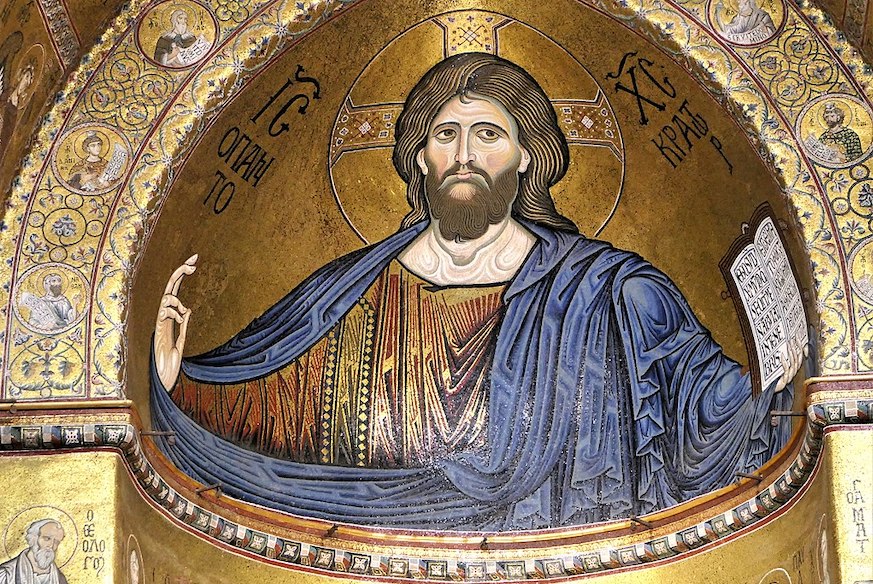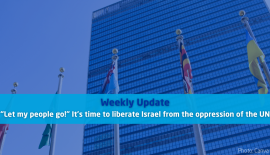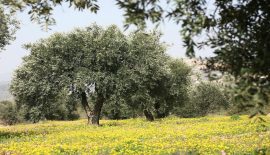Why Israel in Prophetic Perspective – Islam, Christians and Israel (Part 2 of 2)
Hope for the Future?
What does the future hold for Christian minorities in Islamic contexts? The trend in the last two decades has been consistently towards the erosion of their rights and status, the increase of pressures and discrimination. These developments have gone largely unremarked by the world in general, including the western Churches. Christians in Muslim countries feel themselves forgotten by their Christian brothers and sisters elsewhere who are blessed with greater freedoms, and this only adds to their pain and hopelessness.
“One thing is certain – our hope must remain in God, and we believe that ultimately His purposes will be fulfilled”
But perhaps the new interest in Islam, which has resulted from the events of September 11th, could result also in greater publicity for the plight of the suffering Church under Islam, which has continued for fourteen centuries. Perhaps too it could result in a debate leading to a reformation of Islam, to move it on from its present laws and values, which have remained unchanged since the Middle Ages, towards modern standards of human rights and religious liberty. Maybe this could be one aspect of God’s plans and purposes for His people in the Muslim world who have remained faithful to Christ through all their difficulties. But one thing is certain – our hope must remain in God, and we believe that ultimately His purposes will be fulfilled.
Christians in Israel (*)
The Israel Central Bureau of Statistics reports that on the eve of the Jubilee Pilgrimage by Pope John Paul II, the Christian population in Israel numbers over 130,000 of all denominations- 2.1% of the population.
Historically, on the eve of the WWI, the Christian population was about 70,000- 10% of the population. Over the 20th century, while absolute numbers increased, the relative number of Christians declined. By 1947, on the eve of Israeli independence, the Christian population in Mandatory Palestine was 143,000- 7% of the total population. Thirty-four thousand Christians remained within the borders of the State of Israel, less than 3% of the population.
Today, within the borders of what was ‘Mandatory Palestine’- the State of Israel and the Palestinian Authority- there is a total of 180,000 Christians, just over 2% of the total population.
“Contrary to popular belief, Christian Arabs in Israel are not Muslim in background”
Of the Christian population in Israel, 107,000 are Arabs and 23,000 non-Arab, many of whom came to Israel with their Jewish spouses during the waves of immigration in the 1980s and the 90s, mainly from the former Soviet Union and Ethiopia.
Contrary to popular belief, Christian Arabs in Israel are not Muslim in background. We write this, because most Europeans think that all Arabs in Israel are Muslims and Palestinians.
The estimated breakdown of Christians is:
– About 42% of the Christians are Greek Catholics
– 35% of the Christians are Greek Orthodox
– 17% Roman Catholics and Maronites
– 6% Anglican and Evangelical all together
Arab Christians bring to life less children than their Muslim compatriots, and many of them prefer to immigrate to Europe and America, Canada, Australia and other corners of the Earth. They simply do not feel at Home. To the Muslims, they are considered less Arabs because they are non-Muslim, and to the Jews, they are gentile Arabs, even if they are Christians. The authorities prefer to deal with the Muslims, because they are the majority of the Arab population, or with the Druze, because they serve in the army.
Although most Christians are Arab, their demographic profile differs from the Muslim population, and more closely resembles the Jewish population. In 1998, 36% were aged 0-19 (compared to 35% of the Jewish and 30% of Moslems). Seven percent of Christians are over 65 (compared to 12% of Jews and 3% of Moslems). Christian women have an average of 2.6 children, compared to 2.7 children per Jewish woman and 4.8 per Muslim women. Average first-time age of marriage for Christian men is 28.0, a year and a half more than for Jews and three years older than Muslims. Average first-time age of marriage for Christian women is 22.7 years, a year younger than for Jewish women, but three years older than for Muslim women. Twelve percent of Christian women between 25-49 are single, compared to 7% of Muslim women and 5% of Jewish women of the same age group. There are 39,000 Christian house holds in Israel, with an average size of 3.6 persons per household, compared to 3.2 for Jewish households in Israel, and 5.4 for Muslims. Approximately, 29,000 households are either singles or cohabitation.
Ninety-eight-point two percent of Christians live in urban areas, compared to 90.3% of Jews and 90.8% of Muslims. Nazareth is Israel’s largest Christian city, with 19,600 Christians, 1/3 of the population in 1998. Other Christian concentrations are: Haifa- 15,6000, Jerusalem- 14,000, Shfaram- 7,6000 and Tel Aviv-Jaffa- 4,600. Villages with Christian majorities include Eilabun, Rama, Kfar Yasif, Jish, Fassota and MaÆilia in the Galilee.
Christians in Israel, like Jews and other Christian communities in the Middle East, are characterised by a high level of education, particularly among the younger generation. Fifty percent of Christians have completed twelve years of school. Fourteen percent of the 25-64 age group has an academic education, and 2/3 have a BA degree (as of November 1995).
Seventy percent of Christian men are employed, compared to 60% of Jewish men and 66% of Muslim men. One third of Christian women are in the civilian work force, compared to 14% of Muslim women and over half of Jewish women. Twenty-five percent of Christians are employed in academic free and technical profession, a similar proportion to Jews, compared to 14% of Muslims.
Except for those living in cities of over 100,000, most Christians own their homes, compared to all sectors of the population. Household density falls between Jews and Muslims, at approximately 1.4 persons per room, compared to 2.0 for Muslims and 1.0 for Jews. Over a quarter live in densities greater than three persons per room, compared to almost half of Muslims and less than 5% of Jews.
Since the rise of extreme Muslim fundamentalism there is a high degree of tension between Muslims and Christians in Israel. This year, the Muslims attacked the Christians in Nazareth while they were praying in the church at Easter time, at 3 a.m., because they want to make the city of Jesus the second Mecca for the prophet Mohammed. At this time, during the Al-Aqsa conflict, the intifada, they put a big pressure on the Christians, to work together against the Jews. Until now the Christians did not take part in the riots. Also, fundamentalist Jews sometimes threaten the Christians. The need today is greater than ever to support the social, educational, health and spiritual existing institutions. Through such services we can keep the balance, and prevent harder emigration rate from taking place. Otherwise, we may be witnesses to a third Millennium of no Christianity in the Land where Jesus Christ once walked the earth!
(*) The statistics mentioned above date from 2004 when this article was written. Current data presented in a similar fashion can be found on the following website. https://www.jewishvirtuallibrary.org/latest-population-statistics-for-israel#Christian
The Ancient Churches in Israel
The Ancient Orthodox churches of the East make up a relatively small part of the Christian churches in Israel. But they are an essential part of our Christian heritage, having an uninterrupted spiritual tradition for 2,000 years. The Syrian church claims an unbroken link with direct links with the church established in Jerusalem by the apostles. Similarly, the Coptic Orthodox Church was founded by the Apostles’ missionary work of the first century.
Their liturgies are among the most ancient and rich in the whole of the churches. Both churches have played a central part in the development of the ascetic life. A Coptic peasant, St Anthony (circa 256-356 AD) was the first famous hermit, while the first Syrian monastery was founded in 330 AD. Even today their monasteries are a profound testimony to the faith of generations of Christians, despite centuries of trials and persecutions. Migration has led to significant Coptic communities in America, while there are Syrian orthodox communities throughout Europe, and also in South America. To this day, however, their ancient traditions and rich liturgies are maintained in the Holy Land: both in the Church of the Holy Sepulchre, and in their own monasteries and churches.
In view of the strong links between the diocese of Coventry and the Syrian Orthodox diocese of Jerusalem, this article concentrates on the Syrian Orthodox church. But the Coptic Church has played a vital part in the history of Christianity in the Middle East and North Africa. Based almost entirely in Egypt, the church has proved itself to be extremely resilient, in the face of persecution, notably under Al-Hakim in the 11th Century. Today, the Copts are the largest of the Christian communities in the region and in recent decades the tradition of monasticism has experienced a powerful revival. Traditionally, the language of the church has been Coptic, which is related to the language of the pharaohs, although Arabic has largely replaced it in church life today.
The Coptic Church has had strong connections with Jerusalem, where there is a Patriarchate, a monastery, churches and a presence in the church of the Holy Sepulchre. (The Ethiopian Copts also have a small representation.) Throughout the ages there has been a strong tradition of pilgrimage, but reflecting the politics of the present day, Pope Shenouda III has forbidden Copts from visiting Jerusalem. Expressing solidarity with Muslims in Egypt and elsewhere, he has said “Copts will not enter Jerusalem except in company with their Muslim brothers and sisters”.
“The Syrian Orthodox church evolved from the ancient church of Antioch”
The Syrian Orthodox Church
The Syrian Orthodox church evolved from the ancient church of Antioch, and the head of the church has historically been the patriarch of Antioch. Traditionally regarded as the mother of the gentile churches, Antioch became the headquarters of Christianity in Asia. The Syrian church flourished in what is today Syria, Turkey, Iran, Iraq, India, in the whole Arab peninsular and reached even to China. Even today, it remains strong in Southern India.
It has passed through many trials and persecutions over the centuries, often associated with heavy migration. The Syrian and Byzantine orthodox churches separated in 451AD when the Syrian church refused to accept the decisions of the Council of Chalcedon. The church suffered persecution under the Byzantine emperors, and the leadership retreated to make a homeland at Tur Abdin on the borders of Southern Turkey and Syria. In this inaccessible area 300 monasteries were founded, with Deir El-Zaferan as the headquarters. These monasteries have maintained Antiochene liturgies in the original Aramaic language for 1,500 years.
The church continues to be proud of the fact that is has always used Aramaic (also called Syriac), which was the mother tongue of Jesus. Once spoken throughout the Middle East, Aramaic has been the language of the church since its inception. It was the everyday language of Jesus, and is very close to Hebrew. The split with the Byzantine church reflected a linguistic fault-line – between the Greek speaking West and those in the East who still used Aramaic as the liturgical language.
The liturgy is one of the oldest and richest in Christendom. Petra Heldt, executive secretary of the Ecumenical Theological research Fraternity in Israel (ETFI) has pointed out the closeness of its style and concept to the Jewish faith. The most-used liturgy is that of St James. The tradition is that St James, who learned it from Jesus Himself, first celebrated it in Jerusalem. Certainly, there is evidence it was used in liturgies used in the second half of the second century.
Petra Heldt notes it is closely related to the Jewish liturgy of the Temple in Jerusalem and the synagogues of Jewish centres in Asia Minor. The structure – opening prayers, reading psalms, reading scriptures in a yearly term, sometimes a sermon, prayer, and blessing – is identical with the one of the synagogues. The faithful prostrate themselves during their worship, as the Jews and others in the East did (and has been followed since by Muslims). The Eucharist follows the structure of the Passover Seder meal as celebrated by Jesus in the house of Mark.
The church has made outstanding contribution to learning and the arts, especially through the monasteries. As well as following the vows of celibacy, silence, poverty, fasting and prayer, they wrote thousands of manuscripts, which form an everlasting legacy to education and the arts. The Peshitta, the Aramaic bible translation used today, was completed in the early fifth century. The remnants that have withstood the ravages of history are among the most ancient among the manuscripts in the world. Today, Syrian scripts from the fifth and sixth centuries may be found in major museums in London, the Vatican, Paris and Berlin.
Having suffered under Byzantium, Syrian Christians welcomed the Arab conquerors. Syrian scholars, ecclesiastics and laymen played a significant role in the development of Arab culture and the flowering of the Golden age of Islam. They translated Greek classical, scientific and philosophical works into Syria and Arabic and were highly esteemed at the caliphal courts in Baghdad and elsewhere.
“In the period of the Seljuks, the Syrian Orthodox Christians, along with the Armenians, have been among the most persecuted”
The change came in the 11th century, in the period of the Seljuks. Since then, the Syrian Orthodox Christians, along with the Armenians, have been among the most persecuted. With the break-up of the Ottoman Empire and the emergence of a Turkish state, they were subject to waves of persecution and slaughter, and most fled to Syria. In 1924 Ataturk expelled the Syrian Orthodox patriarch, and in 1978 the authorities closed the last Aramaic school. Today the Syrian Christian community in Turkey is tiny, and the new headquarters of the church is in Damascus, where the patriarch eventually settled.
Refugees from Turkish persecution in the 19th century also sought refuge in the Holy land, creating communities in Jerusalem and especially in Bethlehem. Of course, the Syrian church always had a presence in Jerusalem, owning many churches and monasteries. Syrians have always occupied a place in the church of the Holy Sepulchre and claim an important part in its maintenance, especially in the period after Saladin regained Jerusalem from the crusaders. However, over the centuries most were destroyed and some were converted to mosques.
The most important Syrian Orthodox church is St Mark’s in Jerusalem’s Old City. This is the traditional site of the “Upper Room” where our Lord celebrated the last supper. It is said this house once belonged to Mary, the mother of John Mark (Acts 12), and is also where his disciples received the Holy Spirit, and which was Peter’s refuge when returning from prison. In 1940, restorers found an inscription, which suggests the church was already venerated as the house of St Mark by the seventh century. Today it includes a lavishly decorated medieval portal, a pillared courtyard from the crusader kingdom, and a magnificent gilded altar made in 1733 in Turkey.
In recent decades the community in Israel and Palestine has been in decline. Before 1949, St Mark’s performed more than 50 baptisms each month. Since then, political turmoil, Arab-Israeli conflict and economic struggle took a harsh toll. Like all Arab Christians, they have sought better lives abroad, and there has been heavy migration to Europe and America. Today the church baptises no more than 20 babies in an entire year.
Those that remain are economically marginalized. Unemployment runs at 80%, living conditions for many are in extreme poverty and it is not unusual for two generations of a family to live in one room. Traditionally the church seeks to provide education in its own schools but this has not been possible as the better off leave the country. This means the remaining community is largely deprived of educational opportunities and hence destined to remain at the bottom of society.
With this in mind, Coventry has worked with UK charities and other supporters to help the community to start a new school. This opened for the first time in September 2000. This does not just provide free education to the poor and improving economic opportunities for individuals. It also acts as a focal point for the community, and provides a stronger foundation for the Church to continue to make its unique contribution to Christianity in Israel in the next millennium.
What About the Future of Islam?
Will Islam finally conquer the world, as promised by Muhammad? Will there be a ‘jihad’ of the whole Islamic world against Israel? Because Israel and Jerusalem are number one on the agenda of many Islamic leaders. They do not forget about the Christian world (remember 11th of September 2001 and the destruction of the twin-towers in New York), but Israel is first. It cannot be in Islamic thought and Islamic theology that this tiny piece of land Israel and this third holy city of Islam, Jerusalem, who were under Islam for over a thousand years, would remain forever under religions like Judaism or Christianity that are considered by Islam as stations passed by.
In the Bible we find some remarkable prophecies.
– Isaiah 17:1-2 says: “…See, Damascus will no longer be a city but will become a heap of ruins. The cities of Aroer (about 14 miles east of the Dead Sea on the Arnon River) will be deserted and left to flocks, which will lie down, with no one to make them afraid…” This has never been fulfilled in history, but one day it will. By Israeli armies? By Israeli bombs? By an Israeli atomic bomb, used in defence because of a Syrian attack? By other (natural) causes? We can only answer those questions for sure after the event has happened.
– Isaiah 19:16-17 says: “…In that day the Egyptians will be like women. They will shudder with fear at the uplifted hand that the Lord Almighty raises against them. And the land of Judah will bring terror to the Egyptians; everyone to whom Judah is mentioned will be terrified, because of what the Lord Almighty is planning against them…” This has never been fulfilled in history, but one day it will. Although we have seen how the LORD fought at the side of His people Israel when they were attacked several times since 1948, and how the Egyptian fled in panic, still this is only a foretaste of what is going to happen one day. And the end-result then will be that Egypt no longer will serve Allah, but the God of Israel, the God of Abraham, Isaac and Jacob, with the 4 letters of the unspeakable Name YHWH. Hard to imagine that mighty Egypt will tremble because what the Lord through tiny Israel will do to them. But the result will be that Egypt will recognise who the true God is, see Isaiah 19:18-25.
– Psalm 83:1-8 says: “O God, do not keep silent; be not quiet, O God, be not still. See how Your enemies are astir, how Your foes rear their heads. With cunning they conspire against Your people; the plot against those You cherish. ‘Come’, they say, ‘let us destroy them as a nation, that the name of Israel be remembered no more.’ With one mind they plot together; they form an alliance against You – the tents of Edom and the Ishmaelites, of Moab and the Hagrites, Gebal, Ammon, and Amalek, Philistia, with the people of Tyre. Even Assyria has joined them to lend strength to the descendants of Lot…” When one looks at today’s map, these old names all refer to a ‘first ring’ closely around Israel, Like Lebanon, Syria, Jordan, the Palestinian territories, with Iraq (Assyria) in the background. A combined war against Israel, to wipe it off the face of the earth. These are all predominantly Muslim countries and peoples. Has this already happened or is this also referring to some future event?
“These prophecies show us that one day Egypt and Iraq no longer will worship Allah, but YHWH”
– Ezekiel 38 and 39 say that nations under the leadership of Gog (from the land of Magog, the chief prince of Meshech and Tubal) will suddenly invade the land of Israel. It talks about Persia, Cush and Put joining him, as well as Gomer with all his troops, and Beth Togarmah from the far north with all its troops – the many nations with him, nations that are like a ‘second ring’ around Israel. When one reads Flavius Josephus to identify these old names, they refer to nations like Saudi-Arabia, Libya, Turkey, Iran, and even the former southern Soviet Republics, who today are all Islamic. This has never happened in history so far. Some say that even Russia itself is involved in the background. Syria, Egypt and Iraq are not mentioned, by the way! Are they no longer a thread when the ‘first ring’ was dealt with? But the Lord will fight for His people Israel, and they will need 7 months to bury all the corpses.
– Finally, Zechariah 12:2-4 says: “…I am going to make Jerusalem a cup that sends all the surrounding peoples reeling. Judah will be besieged as well as Jerusalem. On that day, when all the nations of the earth are gathered against her, I will make Jerusalem an immovable rock for all the nations…” The plague mentioned in Zechariah 14:12-15 by which the Lord will smite these ‘United Nations’ makes one think about A(tomic) B(acteriological) C(hemical) weapons. But the victory will be for the Lord and for Israel. The wars and plagues of the end-times will be terrible, Revelation 8 and 9.
Although one could be tempted to put all these prophecies into one big end-time scenario (one thing leads to another, a kind of domino-effect, starting with Syria, then Egypt, then the ‘first ring’, then the ‘second ring’ and finally the whole world), one should be careful with speculations like these. The Bible is not a jigsaw puzzle book. But that the outcome of these ‘battles of the Lord’ will be that His Name and the Name of His Anointed One will be recognised by the whole world – also by the Islamic world – seems to be obvious.
Isaiah 19:23-25 says: “…In that day there will be a highway from Egypt to Assyria. The Assyrians will go to Egypt and the Egyptians to Assyria. The Egyptians and Assyrians will worship together. In that day Israel will be the third, along with Egypt and Assyria, a blessing on the earth. The Lord Almighty will bless them, saying, ‘Blessed be Egypt My people, Assyria My handiwork, and Israel My inheritance…”
So, could the outcome of these battles be that by the terrible defeat these predominantly Islamic armies will face, the Islamic world will realise that not Allah is all-powerful, but that YHWH, the God of Abraham, Isaac and Jacob, the God of Israel, the Father of our Lord Jesus Christ, the Creator of heaven and earth is all-powerful? That He is the one and only God? Will the shattering of all the dreams and hopes of the Islamic world lead to an openness and willingness to hear the words of the Gospel? Will they finally realise that there is only one real Prophet, Jesus Christ? And that Muhammad was a false prophet? Will that finally bring peace to the hearts of numerous followers of Islam? Will that change their hatred into love and compassion for their Jewish brothers and sisters? Will they then start blessing Abraham instead of cursing him? As we all have to learn that? These prophecies show us that one day Egypt and Iraq no longer will worship Allah, but YHWH.
And Paul concludes that one day “…every knee shall bow, in heaven and on earth and under the earth, and every tongue confess that Jesus Christ is Lord, to the glory of God the Father…” (Philippians 2:10-11).






